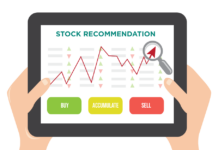Gold recovered from a five-month low in September as softer US dollar and rising Covid-19 cases reignited its safe-haven demand. A recovery in physical demand due to bargain buying also supported the sentiment.
The benchmark London spot registered a high of $1833.80 an ounce, as US non-farm payrolls data was released in the first week of September. Domestic MCX futures, too, gained but a strong rupee limited the rally.
The US non-farm payrolls numbers for August rose by 2,35,000, far below economists’ forecast and the weakest in seven months. New Covid-19 cases weighed on the US job recovery. However, there are hopes that the soft job report may prompt the US Federal Reserve policymakers to delay considering a scale-back of its asset purchase programme during its next meeting.
In the latest Jackson Hole symposium speech, Fed Chair Jerome Powell also hinted that though the US job market made clear progress, the central bank was waiting for substantial further progress for tapering stimulus measures.
Measures taken by central banks to prolong their stimulus will be welcome news for gold. In June, gold corrected about seven percent on rumours that the Federal Reserve would start tapering its massive bond-buying programme soon. A shortfall in growth in employment creation dispelled expectations of an early monetary tightening.
Nevertheless, the European Central Bank (ECB) has signalled it will trim its emergency bond-buying over the coming quarter.
In its latest policy meeting on September 9, the bank announced its first small step towards unwinding the emergency aid that has been shoring up the Eurozone economy during the pandemic period.
The ECB had promised an even longer period of accommodation of ultra-easy policy when it was unveiled in July but the persistent inflationary pressure influenced the decision.
In August, gold plunged to a five-month low weighed down by a firm dollar, robust equities, and a rebound in US treasury yields.
Concerns over physical market activities in the key Asian countries due to the spread of the more virulent Delta variant also cast doubts on the prospects of the commodity.
The dollar index, which is measured against a basket of six major currencies, had a strong start this year. It rallied about 4 percent in the first quarter but reversed most of the gains by the end of May.
It gained traction again on optimism over the US economy and hopes of tapering of fiscal stimulus measures. Since the dollar is the benchmark pricing mechanism for gold, it is inversely correlated to the yellow metal.
Dollar volatility affects the sentiment of other currencies as well. Euro corrected to an eight-month low in August but appreciated later. The Indian rupee, too, appreciated from a near Rs 75 levels to Rs 73 recently.
Gold’s near-term outlook is likely to be choppy with mildly positive. Fundamentals are not strong enough to break its recent high. Investment demand is likely to be steady due to a rally in equity and a firm dollar.
Physical demand from India and China may also be more or less stable. Prices continue to track the performance of the dollar, central bank policy decisions, global economic outlook and bond yields to set a medium to long-term direction.
First published in Moneycontrol










